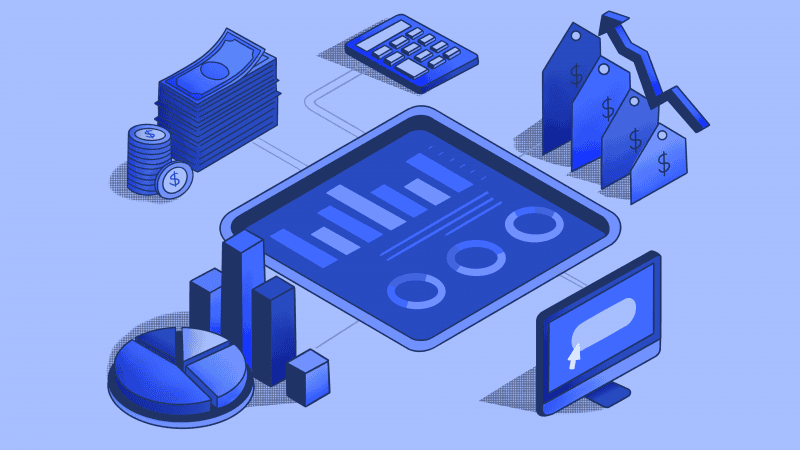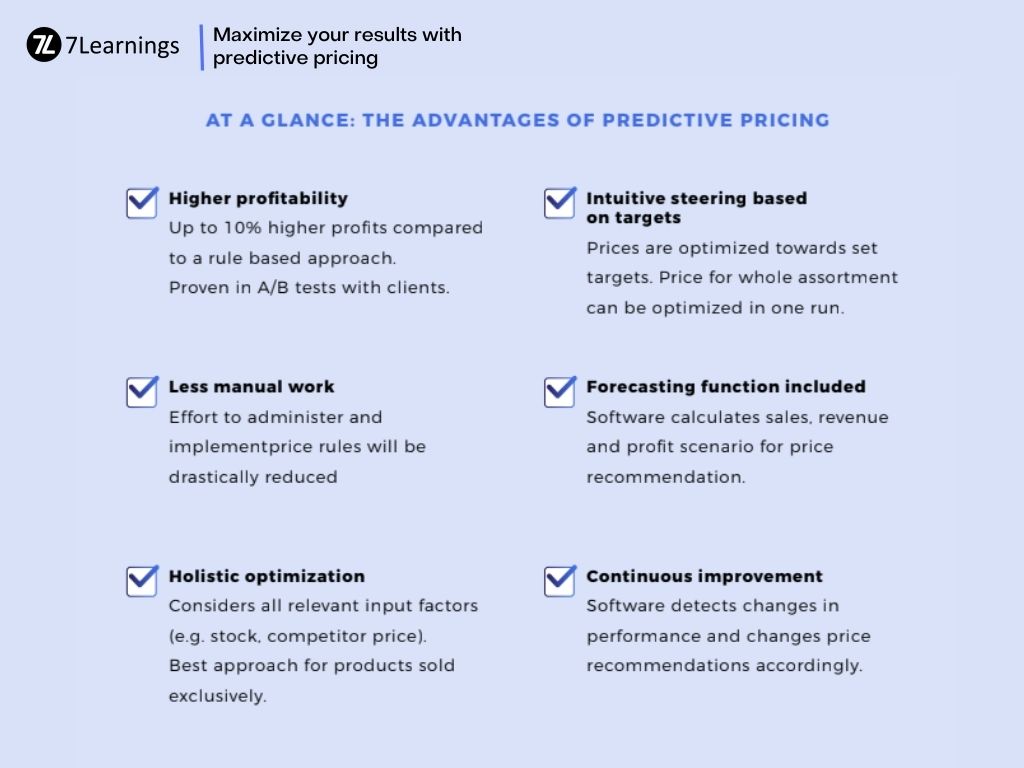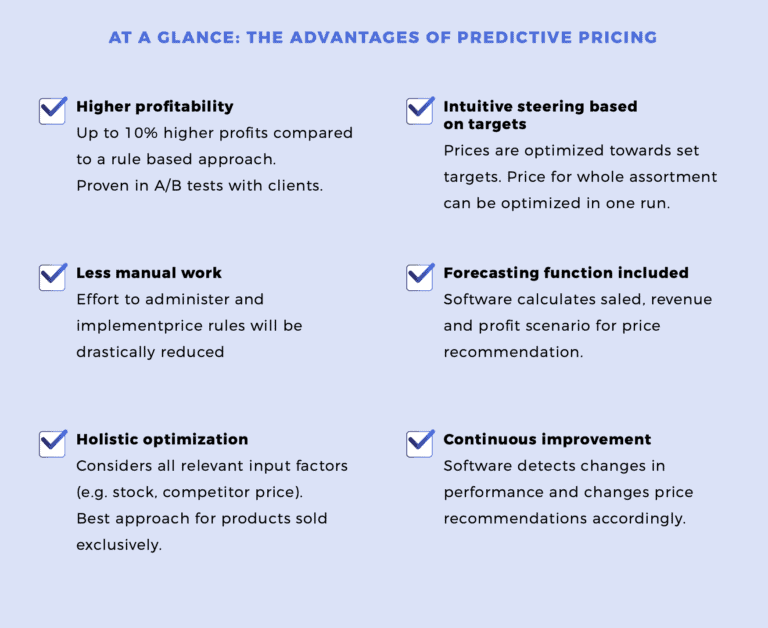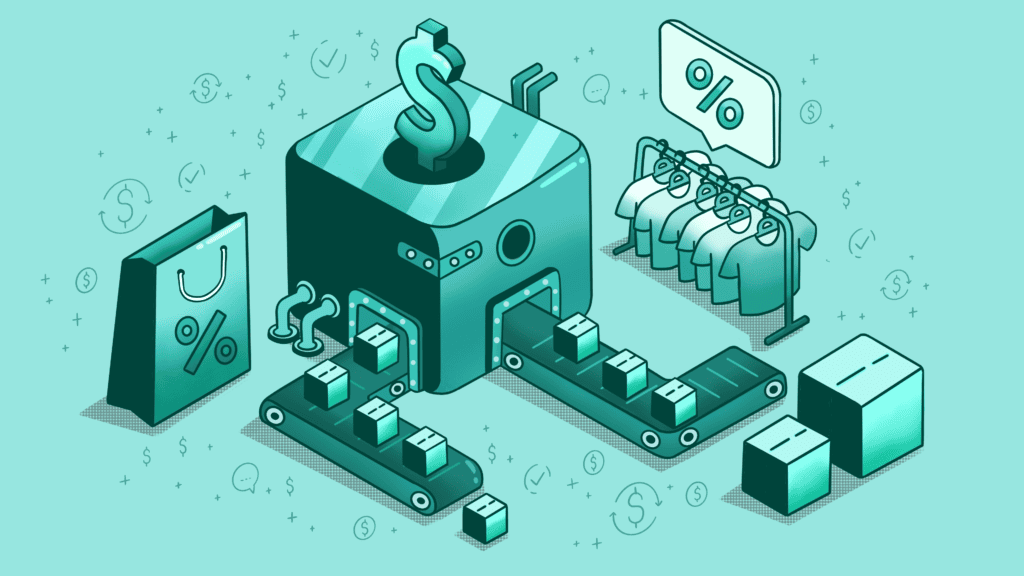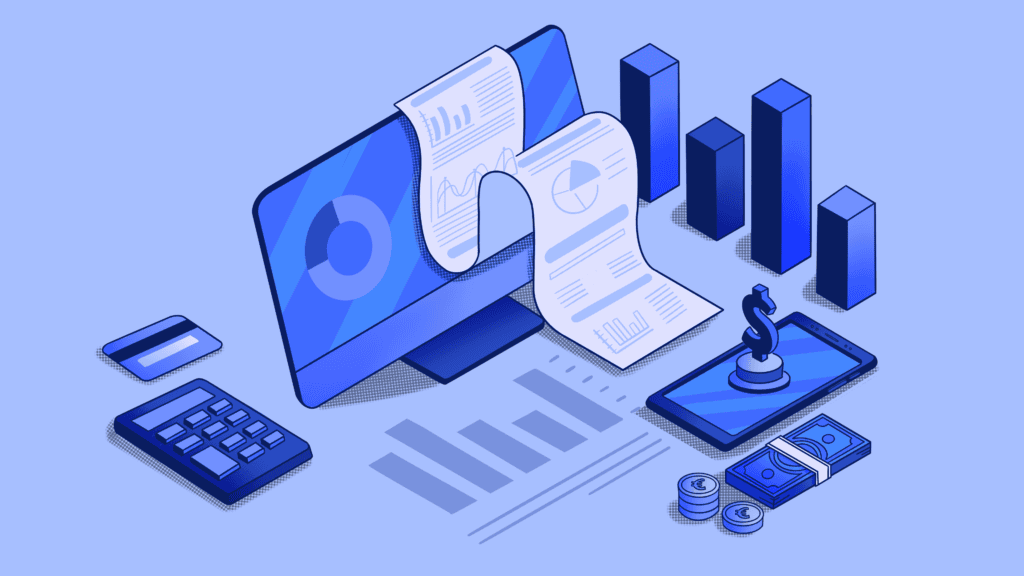What is dynamic pricing?
More and more customer data, ever-larger product ranges, price transparency through simple comparison options, and the competitive intensity of e-commerce retailing make optimal pricing strategy increasingly challenging. Retailers can choose between two types of pricing strategies – static and dynamic.
Static pricing works with a single price point, i.e. a fixed price. With dynamic pricing, there are several price points. The retailer continuously and (semi-)automatically adjusts its prices for products to market requirements.
There are different methods and technologies that can be used for dynamic pricing. They all have a common goal: to optimize prices to maximize the KPIs of the retailer. Recently, new technologies such as machine learning-based pricing have emerged, which can significantly increase the performance of price optimizations. The most advanced pricing solutions forecast the effect of price changes before prices go live. Overall, it has been demonstrated that retailers that upgrade to advanced, AI-driven pricing solutions systematically earn higher profits and outperform their competitors.
Source: https://7learnings.com/resources/download-dynamic-pricing-the-ultimate-guide/
What are the drivers of dynamic pricing?
The practice of dynamic pricing originated in the airline industry, where it started being used to change and set prices in the 1980s. Before that, it was already common practice in grocery stores to discount perishable products like bread over time. In its most basic form, dynamic pricing simply means that a company sells a product at different prices over time.
Today, dynamic pricing has become the norm, and it is widely used in retail – particularly for e-commerce retail. There are three factors, in particular, which are responsible for driving this growth and advancement of the dynamic pricing field:
Increasing complexity and transparency of retail
Online channels are the main source of growth for retailers. This trend has been accelerated in the recent Corona crisis. Selling through online channels has dramatically increased price and information transparency. Customers can compare product prices on major platforms with just a few clicks. Changes in external factors such as competitor prices have an immediate impact on their own business. To remain competitive, retailers must constantly adapt their prices to a changing market environment.
A data explosion
Data collection has exploded in recent years and it is likely that this growth rate will continue to increase. In retail, in particular, customers leave a data trail every time they visit a website, make a purchase with their credit or loyalty card. Retailers need to tap into this data to optimize their prices and identify profit potential.
The application of machine learning technology
Today’s machine learning technology has a high maturity and it has become much easier to apply. There is a broad scope of applications in retail, with price and promotion optimization being the use case that promises the biggest impact on business results and is the most feasible to implement. With fierce competition and razor thin margins, retailers need to upgrade their optimization capabilities with this new technology.
What are the different types of dynamic pricing?
Forms of dynamic pricing can be differentiated by the main input factors that influence price changes and the technology or main methodology that is being used. In practice most companies use a combination of different forms to fully leverage the potential of pricing.
Generally all kinds of different factors can be used as input factors or triggers for price changes. The most common factors are the following:
Supply
This is very common in industries with a large share of fixed cost like hotels, airlines or ride sharing. With a decreasing amount of available supply (seats, free rooms) prices regularly increase. In retail supply plays a major role for stock items especially if they are perishable or cannot be sold after a certain time frame (e.g. fashion products). In this case, retailers need to optimize prices over the whole lifecycle and the available stock of a product.
Demand
An increased interest for a product can be a trigger for a price increase. Following this strategy, retailers try to capture a larger part of the willingness-to-pay of their customers. A typical example is a popular kind of sneaker. In an extreme form we can sometimes observe price gouging where sellers try to take advantage of demand surges. One example was the increase of prices of face masks during the corona crisis.
Competitor prices
Competitor prices are very often used in online retail as one of the main factors to trigger price changes. Especially if competitors sell exactly the same product it is easy for the customer to make a price comparison. The difficulty with this practice is to determine which products are really price comparison products and at which price difference the customer is willing to change vendors.
Characteristics of customers
This practice of dynamic pricing is often referred to as personalized pricing. Here the price varies for different kinds of customers. The idea is that different customers have a different willingness to pay and can therefore be charged different prices. A simple example is a price discount for senior citizens for a museum visit. In online retail personalized pricing is usually put into practice with coupons. Companies that use this form of dynamic pricing need to look out for a potential backlash of their customers that feel that this kind of pricing is unfair.
Even though some of these factors seem common sense like supply and demand. In practice, it is often very difficult to measure them. Rarely companies are in a perfect test environment where only prices are changed while other demand influencing factors stay the same. Often many things change at the same time (e.g. competitor prices, marketing measures, seasonality).
In order to set optimal prices, companies need to understand how these factors influence KPIs and isolate the price effect. That is where technology and methodology comes into play. Conventional (rule-based) pricing methods only make little use of the available data and therefore fall short to reach the full profit potential. New technologies (mainly ones based on machine learning) can consider many different influencing factors – hence improving the quality of price decisions significantly. We can differentiate between three forms of dynamic pricing:
Rule-based pricing: This is the most commonly used method of dynamic pricing. Here prices are calculated based on a fixed formula. One example is to set a minimum margin of 20% or to directly match prices of competitors. There are two main shortfalls of this methodology: it takes a lot of manual effort to administer the price formulas, and the price rules are often based on parameters that are easy to measure but contain only limited information about customer behavior. Often companies achieve only suboptimal results using this pricing method.
Machine learning based pricing: machine learning technology is a huge enabler for price optimization and automation. Machine learning models can be used to measure price elasticities for different price points or even to model the whole price demand curve for each product. These algorithms are able to take into account many more influencing factors than traditional systems, such as historical transactions and sales, seasonality, product attributes and marketing campaigns. The algorithm balances the fine line between “too cheap” and “too expensive,” and facilitates finding the price points that let retailers optimize their prices.
Predictive pricing: The most cutting edge pricing solutions today are further enhanced with the power of advanced forecasting and optimization algorithms. First, they forecast the effect of price changes on the main KPIs of the retailer. Based on these forecasts, they run optimizations to find the best prices according to the set targets of the retailer.
How is dynamic pricing used in practice?
Today, the dynamic pricing systems implemented by e-commerce and omnichannel retailers are varied and advanced. Depending on the industry, they are utilized in different ways. Some examples of dynamic pricing used by retailers today include:
Dynamic pricing in fashion retail
According to McKinsey, pricing is one of the most effective levers fashion retailers can use to optimize their sales and profits. Large fast fashion retailers such as Zara or Mango offer an average of 6,000 items for sale per season. Their unique challenge is to sell these products within the season, as the life cycles of fast fashion items are much shorter than, for example, timeless items such as Rolex watches.
Fashion retail pricing managers therefore have to take into account inventory levels, among other factors, and set prices in relation to stock levels in order to achieve their seasonal targets. To do this, they utilize dynamic pricing to apply discounts, sales and rebate promotions to support a pricing strategy that encourages customers to buy. For example, a blouse at Zara may cost 39.90 euros at the beginning of the season, 29.90 euros at the mid-season sale or a special discount promotion, 39.90 euros again thereafter, and 19.90 euros at the end-of-season sale.
Study
An average item in a Zara store brings in 85% of its full price, while the usual range in the fashion industry is 60 to 70%. This is achieved through intelligent dynamic pricing strategies.
Dynamic pricing in food retail
Approximately one third of all food is thrown away by retailers every year, often because the best-before date has passed. This is not only an ecological and ethical problem, but also a financial one: the loss due to discarded food is estimated to amount to 3 to 10% of sales.
With advanced dynamic pricing software, markdowns on food items can be optimized so that sales are intelligently managed. A dynamic pricing model takes into account all the key factors for each item and store, from current customer demand to buying patterns to seasonality. Dynamic pricing software helps to minimize the amount of unsold inventory while maximizing sales and profits.
Dynamic pricing for ride sharing
A more recent and recognizable form of dynamic pricing is utilized by ride sharing services like Uber and Lyft. Anyone who has used these services will have noticed that their pricing fluctuates throughout the day, depending on various factors including time of day, traffic, and overall demand. “Surge pricing” is the terminology used at Uber to describe the increased rate that is presented to users during times of high demand. In utilizing dynamic pricing methodologies, ride sharing services are able to respond in an agile manner to changes in demand and other influencing factors to set optimized prices which maximize their profits.
Dynamic pricing for ticketing
A classic example of dynamic pricing in practice is for sports ticket pricing. One well known case is the NFL’s use of dynamic pricing to offer variable ticket prices based on a range of conditions, including the current market, a team’s opponent, the weather and other influencing factors. By measuring the supply and demand of tickets based on these factors, dynamic pricing can create the optimum price point that helps to achieve the main business targets – in the case of the NFL, filling seats while still driving profitability via ticket sales.
Dynamic pricing for e-commerce
While Amazon is recognized as an e-commerce pioneer for many reasons – including the vast range of products they offer; their superior fulfillment and delivery capabilities; and their unique supply chain management – an underrecognized element of their success has been their strategy around pricing.
Amazon is one of the pioneers of dynamic pricing, and implemented machine learning based dynamic pricing methods years before their competitors did. As a result, Amazon has been able to use pricing as a lever to drive profitability, sometimes changing prices as much as every ten minutes.
While Amazon was able to drive innovation on their platform by developing and building their own in-house technology, today the same methods that they pioneered are available to smaller and mid-sized companies via advanced pricing softwares and solutions.
What are the benefits of dynamic pricing?
A dynamic pricing strategy for retail is almost always superior when compared to static pricing. In today’s fast-paced and ever-evolving market, retailers need to be able to react to changes quickly. If they are unable to, they risk losing customers to competitors which are more agile and set their prices more intelligently. Dynamic pricing is one of the main levers that retailers can use to stay competitive and to drive profitability.
It is important to note, however, that there are significant differences in the performance of different pricing technologies. With increasing competition and pressure on margins, retailers need to ensure that they are upgrading to the latest pricing technology available. Doing so is a win-win for businesses, because due to the high impact of improved price optimizations on profits, investments in advanced pricing technology reach a fast ROI and pay for themselves.
However, most retailers that follow a dynamic pricing strategy today are still using rule-based pricing to optimize their prices. By doing so, they are systematically losing out on profit potential as compared to more advanced methods. These advanced pricing methods include machine learning based pricing, or the latest generation pricing methodology, called predictive pricing.
For retailers who are still using rules-based pricing, even if their pricing rules are well-formulated, only a limited number of factors can be taken into account. The system is limited by its manual approach, because otherwise it would no longer be maintainable at all. Due to this limitation, essential factors that are decisive for understanding customers’ willingness to buy remain unconsidered. As a result, retailers miss out on significant sales and profit potential.
Additionally, price rules are usually only formulated for product categories, and optimization down to the individual product level is not possible with this method. Since price sensitivity often differs greatly within a category and on an item-to-item basis, this means that further sales potential remains untapped. Additionally, many price rules tend to be based on the actions of competitors. As a result, retailers run the risk of entering a downward spiral in their pricing, as one company tries to undercut the other.
Did you know?
Profit increases of 10% on average compared to rule-based pricing models are possible with machine learning-based pricing software for retailers. 7Learnings has proven this in A/B tests with customers from different retail segments.
What is the latest in dynamic pricing technology?
Due to all of the weaknesses detailed above, it is clear that rule-based pricing is not the ideal method for price optimization in retail. The new standard in pricing technology is machine learning-based pricing methods, which use advanced algorithms that learn from their results in a (semi-)automated way. These solutions are able to improve over time, using their continuous learning to find the optimal price points set against a business’ targets.
Other advantages of machine learning-based pricing applications is that they are able to take both internal and external data into consideration by their algorithms. They are also able to process much larger and heterogeneous datasets than previous, more limited technologies.
The latest generation of advanced dynamic pricing technology, predictive pricing, is further strengthened by its use of powerful forecasting and optimization algorithms. With these, this technology derives even more value from the existing data. Its advantages include:
How can 7Learnings help you implement advanced dynamic pricing?
7Learnings offers companies a simple and smart way to optimize their prices. With our predictive pricing software, we have helped some of the top e-commerce retailers in Europe to improve their pricing processes through machine learning. Using the latest deep learning technology, our application predicts demand, sales, and price elasticity for any product. And with just one click, our customers can generate market-driven prices that maximize profits while taking into account limiting factors such as current inventory levels.
With our innovative price optimization tools, teams gain insights they need to make better, more impactful business decisions. Our software is simple to use and integrates seamlessly into your backend system, helping you streamline your operations while creating immediate business impact.
It is clear that predictive pricing holds major potential for retailers, allowing them to improve their pricing strategy, easily optimize their prices, and maximize their profit potential. At 7Learnings, we have more than 10 years of experience with machine learning based pricing technology, and leading European retailers use our technology to optimize their prices. If you want to learn more about the potential of next generation predictive pricing for your business, please reach out to us to arrange a product demo.
